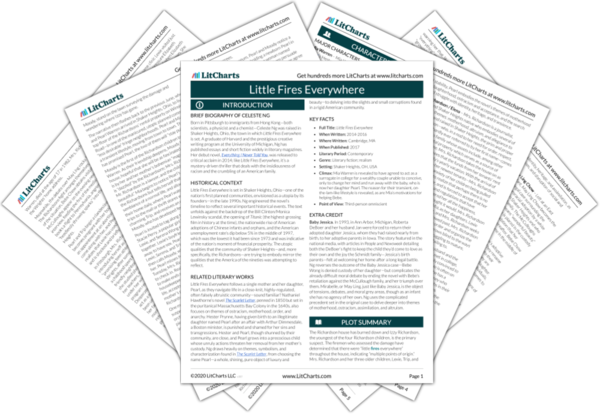Almost every afternoon after school, the Richardson children—except for Izzy, whose siblings taunt her by telling her she’ll soon be on the show herself—gather on their family’s giant, plush sectional sofa to watch The Jerry Springer Show together. Choosing to sit together and watch the show is “one of the few times [the children] agree on anything.” The Richardsons’ lives are ruled by strict rules and careful regulations, and the iconic television program—its popularity at a fever pitch in the late 1990s, the time during which the novel unfolds—provides the Richardson brood with a heady glimpse into chaos, scandal, and the lurid lives of others, far from Shaker Heights. “Thank god we live in Shaker,” Lexie says one afternoon while Pearl has joined the Richardsons to watch an episode of the show centered around race; “No one sees race here.” The children then begin to discuss race amongst themselves over the commercial break, but cut the conversation short once the program returns. The show, then, symbolizes both the desire to peer into the lives of others, and the fear of finding what’s actually there. The Richardsons are insulated from the world by their wealth and privilege, and by the careful order that governs Shaker Heights—they can choose not to discuss race, or not to notice familial or interpersonal chaos, but fail to see their privilege in being able to do so.








